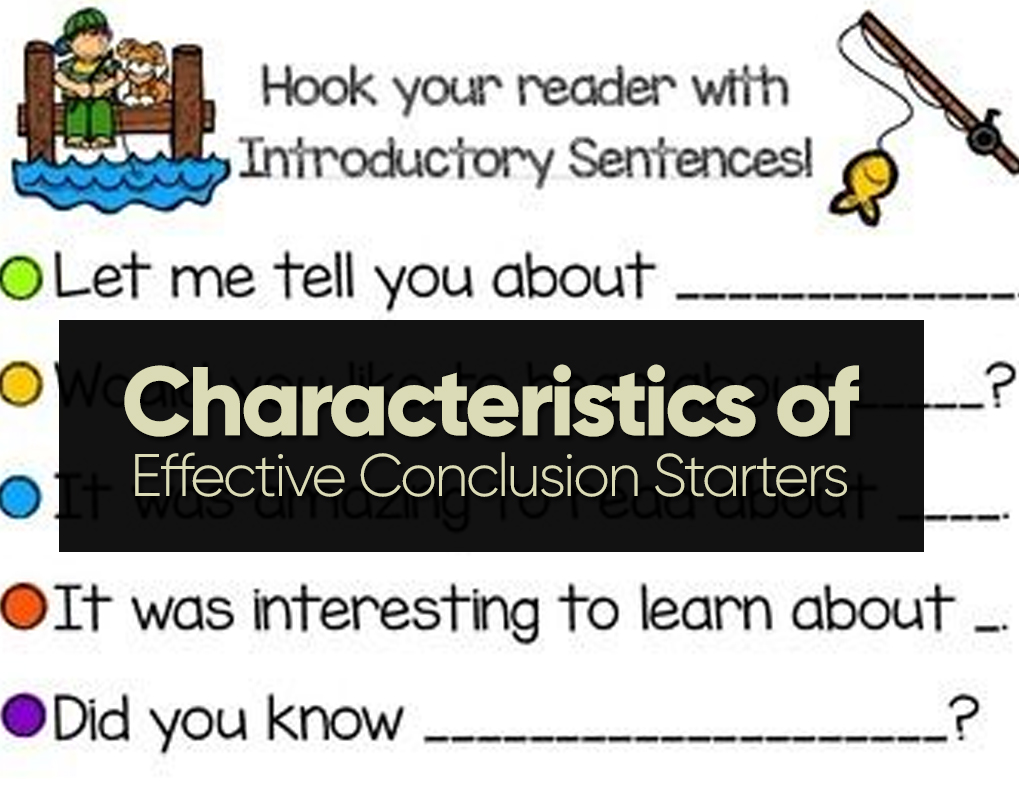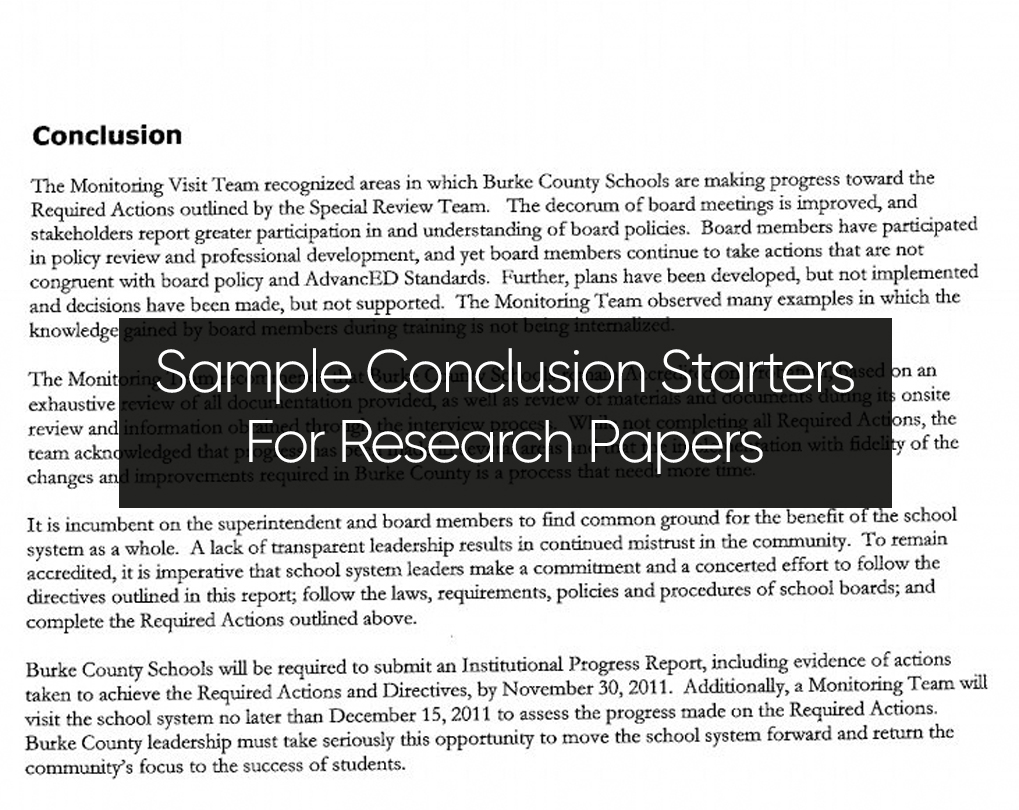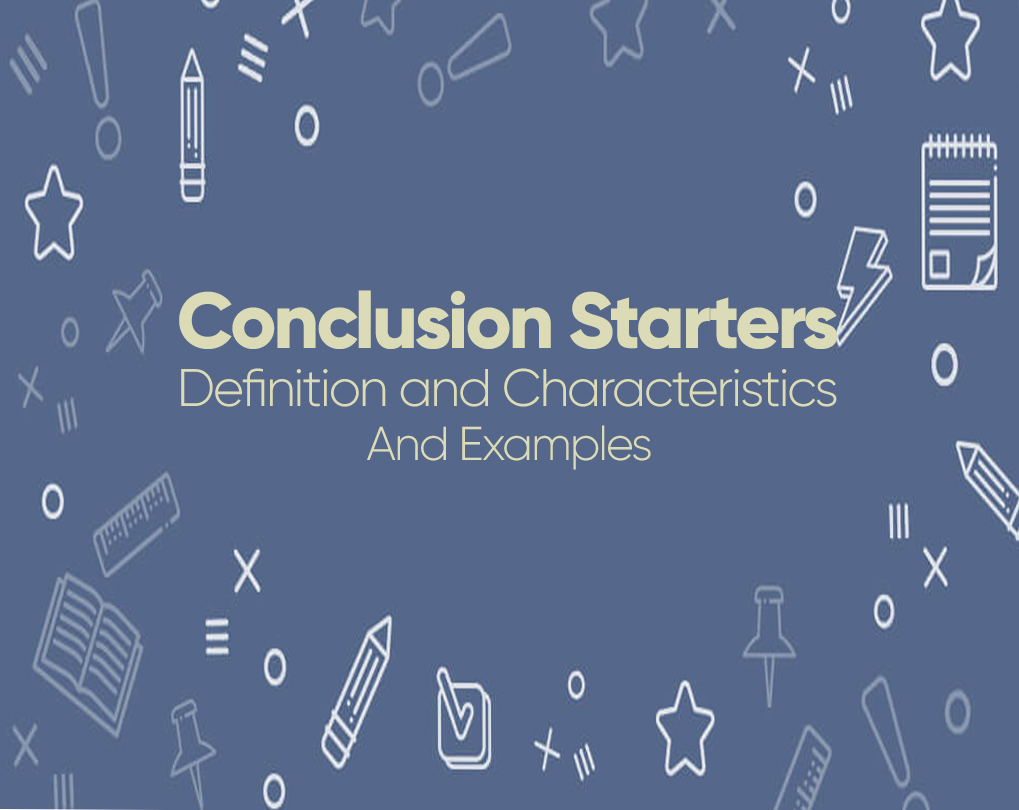Here we are giving the best conclusion starters for our readers. This reading will highlight how to write concluding sentences. We’ll look at examples and starters. A short quiz will follow to test your learning about concluding sentences. A concluding sentence indicates that you are bringing closing to a paragraph. Writing a concluding sentence may not come as quickly as you may think. Many writers fail to realize that it closes out the final thoughts about the topic they are writing.
This is why you need to be able to write useful concluding sentences. For each paragraph, the reader should identify what you’re key points are based on the concluding sentence. Remember, it should not add any information that was not discussed in the paragraph.
Conclusion Paragraph
A conclusion paragraph is your last opportunity to leave your reader with a good impression. Your goal is to leave the reader feeling like they know your argument and evidence. An excellent conclusion should tie all of your ideas together. You can do this by using some particular examples, reiterating key points, and editing carefully. There are some steps you can take to write a strong conclusion to any paper.

Characteristics of Effective Conclusion Starters
When it’s time to bring your work to an end, it’s important to sum up the key points or concepts rather than merely stopping abruptly. Conclusion starters are transitional phrases that let readers know they have reached the final part of a document. Conclusion starters should:
- be just a few words that introduce the first sentence of the last paragraph or brief concluding section
- let readers know that they have reached the beginning of the previous section
- make readers aware that what they’re about to read won’t provide new information
- set readers expectations for how the work will be drawn to a close (such as a summary of main points, statement of need for additional research, or call to action)
Conclusion Starter Ideas for Essays and Speeches
Whether you’re a college, high school, or middle school student, the chances are that you will be assigned to write quite a few essays and deliver many speeches or presentations. When deciding how to end an article or a speech, you’ll need to choose a conclusion starter appropriate for the overall tone. Examples of conclusion paragraph starter words and phrases include:
- all things considered
- clearly
- given these points
- I feel we have no choice but to conclude
- in conclusion
- in drawing to a close
- in general
- in light of this information
- in my opinion
- in summary
- in the final analysis
- nevertheless
- now that you know
- overall
- the logical conclusion seems to be
- to summarize
- to sum up
- ultimately
- upon considering all the facts
- upon exploring the situation from multiple perspectives
- what else can we conclude but that
- what another conclusion can we draw from
- when viewed from the standpoint of
- when faced with the question of
- with all this in mind

Sample Conclusion Starters for Research Papers
Since a research paper focuses on presenting a particular study’s findings, the conclusion usually focuses on significant findings and their implications. For academic research papers, it is generally expected that the article will end with a call for additional research in the form of further study of a similar topic or to explore a related research question. The tone should be formal, taking into account the extent to which readers would be expected to have advanced knowledge of the subject matter. Phrases you might use to start your research paper conclusion include:
- as a result
- as expected, the results indicate
- as indicated by the data
- based on the evidence presented
- based on the results of this study, it seems
- based on what is known at this point
- data seem to indicate
- in light of these results
- in the context of x, it seems that
- in the final analysis
- surprisingly, the data revealed
- the data indicate
- the data reveal
- the major revelation from this study is
- the results of this study demonstrate
- the results of this study seem to indicate
- to extrapolate from the data
- upon analyzing the data
- upon review of these findings
- what this study reveals is
- what we now know is
- while additional research is needed
- while further research is warranted
- while these results seem to indicate
- with products like these, it seems
Less Formal Conclusion Starter Examples
Some writing is much less formal than a research paper or school assignment, or you may even get assigned to write an informal essay that calls for more of a personal touch than an academic tone. You may want to opt for a conclusion starter with a more laid-back, conversational style like these examples in such cases.
- after all, has been said and done
- as I see things
- at the end of the day
- beyond a shadow of a doubt
- in a nutshell
- in case you’ve wondered
- in simple terms
- my personal take on
- on the whole
- the time has come
- to cut a long story short
- to cut to the chase
- to get to the heart of the matter
- to plainly state the facts
- to wrap this up
- what are we to think about
- what I believe to be true
- what it boils down to
- what I think is
- when all is said and done
- who knew that
- without all the mumbo jumbo
FAQs
[wps_faq style=”classic” question=”Q: How do you write a conclusion answer?”]A; Remember that everything you have to tell- all your conclusions about the topic and your facts that prove them – belong in the body of the paper. The ending merely wraps up the theme and ties it in a bow. Restate the purpose. Sum up – Wrap up all the details you’ve made into one general statement.[/wps_faq][wps_faq style=”classic” question=”Q: How do you start a conclusion in MLA?”]A: Restate your topic and why it is essential. Restate your claim, address clashing viewpoints, and clarify why readers should align with your site, Call for action, or overview later research possibilities.[/wps_faq][wps_faq style=”classic” question=”Q: What is an example of a concluding sentence?”]A: A concluding sentence can be done to give an overview of the main points of the paragraph. Example: The US government should legalize marijuana because it is popular, has widespread abuse that is difficult and expensive to police, and would be a profitable market to tax.[/wps_faq][wps_faq style=”classic” question=”Q: How long should a conclusion be?”]A: Most maximum conclusion paragraphs are four to five sentences long and should average between 50–75 words. They should be long sufficient to get your point across but short sufficient that you’re not rehashing every idea you’ve ever had on the subject. Conclusion paragraphs begin by revisiting the primary idea definition.[/wps_faq]


